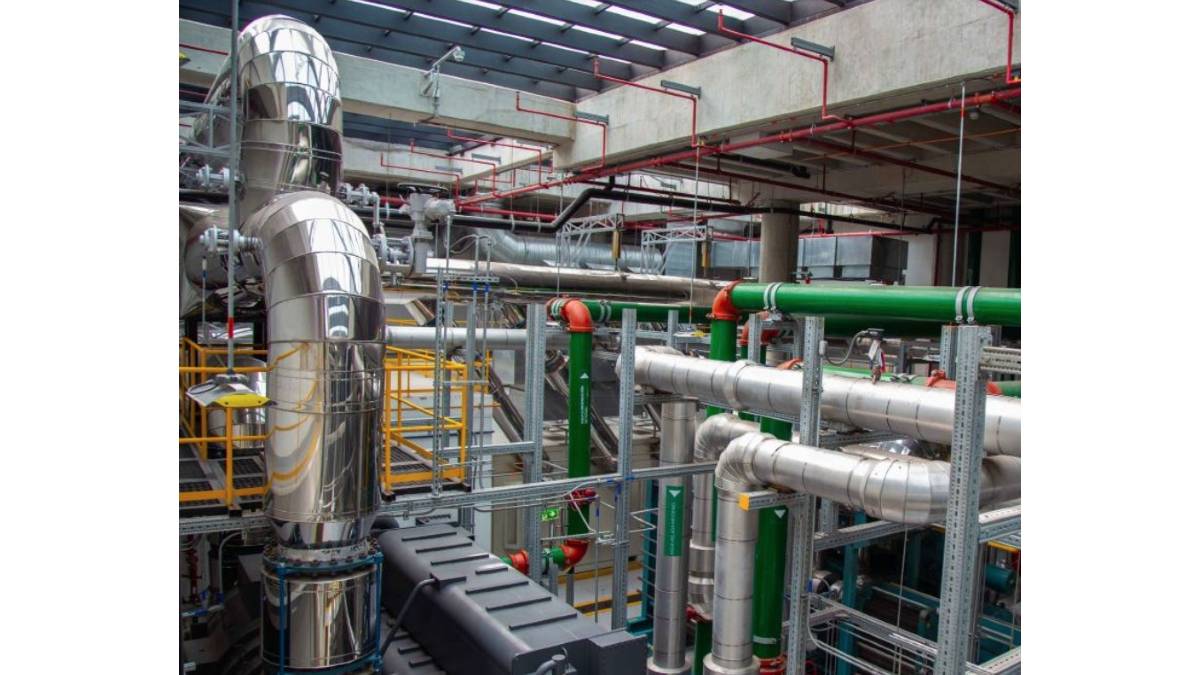 Colombia. The Thermal Districts project in Colombia shared an interesting analysis on the importance of thermal districts, their advantages, implementation and the energy savings they offer. Here is the note:
Colombia. The Thermal Districts project in Colombia shared an interesting analysis on the importance of thermal districts, their advantages, implementation and the energy savings they offer. Here is the note:
The intensification of climatic phenomena and the environmental crises that have hit the planet in recent years have made it clearer than ever that the commitment of all is needed to reduce the polluting impact on the earth and counteract the damage caused by old productive paradigms of consumption and urban planning.
Thermal districts offer cities a cost-effective solution to reduce greenhouse gas (GHG) emissions and primary energy demand through the cleaner and more efficient provision of air conditioning (A/C) and/or heating services. Thermal districts also allow for the reduction or elimination of emissions of ozone-depleting substances (ODS) that are related to air conditioning.
Likewise, they will contribute to the international commitments that Colombia has within the framework of the Paris Agreement, the Montreal Protocol, with the Program for the Rational and Efficient Use of Energy and other forms of Non-Conventional Energy (PROURE) and is part of the country's official NDCs for the fulfillment of the United Nations Paris Agreement. Likewise, they contribute to the implementation of the National Circular Economy Strategy and the Sustainable Development Goals.
It is an innovative infrastructure alternative to produce cold or heat, centrally, and distribute this form of energy through networks to multiple users and buildings grouped in urban environments such as residential, industrial and commercial sectors. Thermal districts are powerful tools for local and national governments to project cities under the premise of energy efficiency, sustainability and lower environmental impact.
What are the advantages of thermal districts?
- They are a technology designed to replace systems that work with Ozone Depleting Substances (ODS) and that generate a high environmental impact.
- They allow the use of combined cycle plants, waste heat management and non-conventional renewable energy sources or natural sources of heating or cooling.
- They are a business model with significant savings in investment, operation and maintenance costs, with respect to conventional thermal systems, and the reduction of expenses for the purchase of fossil fuels, among others.
- Benefits for the environment
The implementation of thermal districts has two environmental benefits:
- The elimination of the use of ODS in conventional conditioning systems (direct benefit).
- The reduction in the consumption of electricity or gas to produce thermal energy, with lower CO2 emissions (indirect benefit).
The impact on the reduction of GHG emissions associated with the implementation of thermal districts in Colombia is between 2.16% and 6.49%, according to the different scenarios of penetration of technology.
In 2015 it was estimated that there were 1074 chillers installed in Colombia, of which 28% were located in the industrial sector, 27% in establishments in the commercial sector and 22% in different types of offices, which use high-impact refrigerants. Therefore, it is desirable to design thermal districts that use natural or alternative refrigerants with low ozone depletion (ODP) and global warming (GWP) potentials.
Energy savings
Thermal districts allow the supply of multiple energy services from a single system, which increases efficiency in processes and quality of service. This represents economic and energy savings in buildings that use thermal energy.
Globally, thermal districts operate with efficiencies that can reach up to 93%, according to United Nations reports, and allow energy savings of up to 50%, compared to conventional cooling systems.
To learn more about thermal districts: their advantages, how their implementation in Colombia can be strengthened and good practices, we invite you to consult the Methodological Guide here: https://www.distritoenergetico.com/distritos-termicos-guia-metodologica/














